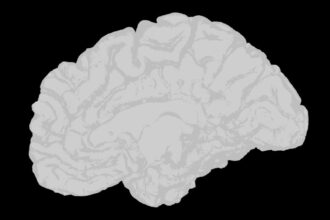Depersonalization-derealization disorder (DPDR) is a complex psychological condition that can leave you feeling detached from your own thoughts, feelings, and sense of self. Imagine looking at yourself in a mirror and not recognizing the person staring back at you; this is a common experience for those who suffer from depersonalization. You may feel as though you are observing your life from a distance, as if you are merely a spectator in your own existence.
This sensation can be disorienting and frightening, leading to a profound sense of isolation and confusion. Derealization, on the other hand, involves a distorted perception of the world around you. You might feel as though your surroundings are unreal or dreamlike, as if you are living in a movie rather than experiencing life firsthand.
This can create a sense of alienation from reality, making it difficult to engage with the world and the people in it. Together, these experiences can significantly impact your daily life, relationships, and overall well-being, often leaving you searching for answers and relief.
Key Takeaways
- Depersonalization Derealization is a mental health condition characterized by feeling detached from oneself and the surrounding environment.
- Symptoms include feeling like an outside observer of one’s thoughts and actions, emotional numbness, and a sense of unreality.
- Causes of Depersonalization Derealization can include trauma, stress, anxiety, and substance abuse.
- Understanding dissociation is important in recognizing the disconnect between a person’s thoughts, emotions, and experiences.
- It is important to differentiate Depersonalization Derealization from dissociation, as they are related but distinct mental health conditions.
Symptoms and Characteristics of Depersonalization Derealization
The symptoms of depersonalization-derealization disorder can vary widely from person to person, but they often share common threads. You may experience persistent feelings of detachment from your body or thoughts, leading to a sense of being an outsider in your own life. This can manifest as a feeling of numbness or emotional flatness, where you struggle to connect with your emotions or the emotions of others.
You might find it challenging to engage in activities that once brought you joy or fulfillment, as the world around you feels muted or distant. In addition to emotional detachment, you may also experience cognitive symptoms such as memory lapses or difficulty concentrating. It can feel as though your mind is foggy or that you are unable to focus on tasks that require attention.
These cognitive disruptions can exacerbate feelings of anxiety and frustration, making it even harder to navigate daily responsibilities. The combination of emotional and cognitive symptoms can create a cycle of distress that feels overwhelming, leaving you yearning for clarity and connection.
Causes of Depersonalization Derealization

Understanding the causes of depersonalization-derealization disorder is crucial for those seeking to make sense of their experiences. While the exact origins of this condition remain unclear, several factors may contribute to its development. One significant factor is trauma; experiences such as abuse, neglect, or witnessing violence can trigger dissociative symptoms as a coping mechanism.
Your mind may create a protective barrier against overwhelming emotions by detaching from reality, leading to the onset of depersonalization and derealization. Stressful life events can also play a role in the emergence of DPDR.
In some cases, substance use may exacerbate these feelings, as certain drugs can induce dissociative states. Understanding these potential triggers can empower you to recognize patterns in your own life and seek appropriate support when needed.
Understanding Dissociation
| Types of Dissociation | Symptoms | Prevalence |
|---|---|---|
| Depersonalization | Feeling detached from oneself | 2% of the population |
| Derealization | Feeling detached from the world | 3-5% of the population |
| Amnesia | Memory loss of specific events | 2-3% of the population |
Dissociation is a broader psychological phenomenon that encompasses various experiences of disconnection from reality. It can manifest in different ways, including memory loss, altered perceptions of time, and feelings of detachment from oneself or one’s surroundings. When you dissociate, it may feel as though you are stepping outside of your body or watching your life unfold from a distance.
This response is often a coping mechanism employed by the mind to shield itself from overwhelming stress or trauma. Dissociation can occur in varying degrees; some individuals may experience fleeting moments of detachment during particularly stressful situations, while others may find themselves grappling with chronic dissociative symptoms. It’s important to recognize that dissociation is not inherently negative; it can serve as a protective mechanism in certain contexts.
However, when dissociation becomes persistent and interferes with daily functioning, it may indicate an underlying issue that requires attention and care.
Differentiating Depersonalization Derealization from Dissociation
While depersonalization-derealization disorder falls under the umbrella of dissociative disorders, it is essential to differentiate between these concepts for a clearer understanding. Depersonalization specifically refers to the feeling of detachment from oneself, while derealization pertains to the perception of an unreal or distorted external world. In contrast, dissociation encompasses a broader range of experiences that may include memory loss or altered states of consciousness.
You might find it helpful to think of depersonalization and derealization as specific manifestations within the larger framework of dissociation. For instance, while you may experience moments of derealization during times of extreme stress, this does not necessarily mean you have DPDR. Understanding these distinctions can help you articulate your experiences more effectively when seeking support or treatment.
Impact of Depersonalization Derealization on Mental Health

The impact of depersonalization-derealization disorder on mental health can be profound and far-reaching. Living with this condition often leads to increased anxiety and depression as you grapple with feelings of isolation and confusion. The persistent sense of detachment can create barriers in relationships, making it difficult for you to connect with loved ones or engage in social situations.
This isolation can further exacerbate feelings of loneliness and despair. Moreover, the cognitive symptoms associated with DPDR—such as difficulty concentrating and memory lapses—can hinder your ability to perform at work or school. You may find yourself struggling to meet deadlines or maintain focus during important tasks, leading to increased stress and frustration.
The cumulative effect of these challenges can create a cycle that feels inescapable, leaving you yearning for relief and understanding.
Treatment and Coping Strategies for Depersonalization Derealization
Finding effective treatment for depersonalization-derealization disorder often requires a multifaceted approach tailored to your unique needs. Therapy is one of the most common avenues for addressing DPDR symptoms. Cognitive-behavioral therapy (CBT) can help you identify negative thought patterns and develop healthier coping mechanisms.
Through therapy, you may learn techniques to ground yourself in reality and reconnect with your emotions. In addition to therapy, mindfulness practices can be beneficial for managing symptoms of depersonalization and derealization. Engaging in mindfulness exercises—such as meditation or deep breathing—can help anchor you in the present moment and reduce feelings of detachment.
Journaling may also serve as a valuable tool for processing your experiences and emotions, allowing you to gain insight into your thoughts and feelings over time.
Seeking Help for Depersonalization Derealization
If you find yourself struggling with depersonalization-derealization disorder, seeking help is an essential step toward healing. It’s important to remember that you are not alone; many individuals experience similar symptoms and challenges. Reaching out to a mental health professional who specializes in dissociative disorders can provide you with the support and guidance needed to navigate your experiences.
When seeking help, be open about your symptoms and how they impact your daily life. A qualified therapist can work with you to develop a personalized treatment plan that addresses your specific needs and goals. Additionally, connecting with support groups or online communities can provide a sense of belonging and understanding as you share your journey with others who have faced similar challenges.
In conclusion, depersonalization-derealization disorder is a complex condition that can significantly impact your mental health and overall quality of life. By understanding its symptoms, causes, and treatment options, you can take proactive steps toward healing and reclaiming your sense of self. Remember that seeking help is not only brave but also an essential part of your journey toward recovery and connection with the world around you.
In exploring the nuances between depersonalization-derealization and dissociation, it’s essential to understand the subtle distinctions and overlaps between these psychological phenomena. An insightful article that delves into these differences can be found on Unplugged Psych. This resource provides a comprehensive overview of how depersonalization-derealization, often characterized by feelings of detachment from oneself and reality, contrasts with broader dissociative experiences, which may include disruptions in memory, identity, or perception.




